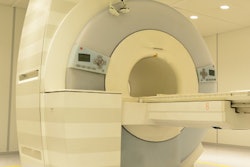
Wait times for MRI scans have been a troublesome issue in Canada. But in Ontario, researchers have developed a method that could double the number of patients who receive MRI scans within targeted wait times by using computer technology to give higher priority to patients the longer they have been waiting.
In Ontario, hospitals strive to serve 90% of patients within target wait times, which range from one to 28 days, depending on the urgency of the case. But at present, only about 33% of patients in the province get scans within those targets.
To improve the situation, researchers at the University of Waterloo looked at 3.7 million anonymous patient records from 74 hospitals in Ontario. They developed computer simulations to generate an optimally balanced scheduling system based on a first-come, first-served basis, as well as medical priority. The researchers worked with data originating from Cancer Care Ontario, an agency of the Ontario government that is responsible for improving cancer services.
The researchers performed predictive analytics to forecast the number of daily arrivals and how many procedures were performed at each hospital. They then developed a scheduling protocol designed to make patient throughput more efficient.
The protocol seeks to balance traditional first-in, first-out scheduling practice with a model called priority promotion. The model combines the priority level of patients along with the delay of their scan to give them a weighting, with patients getting higher priority ratings the longer they have been waiting for an MRI scan. Additional efficiencies could be achieved by delaying the scheduling of appointments to ensure decisions are based on the most up-to-date information, the researchers found.
How well did it work? The group found that the strategies would increase the proportion of patients who receive MRI scans in a timely fashion from the current 33% to 66%.
The modification of scheduling represents a low-cost initiative to assist the province in reaching target wait times for MRI scans, given no new machines would have to be purchased nor personnel hired.
"It is not like buying another machine or hiring more staff," said Abouee Mehrizi, an engineering professor and Canada research chair in healthcare operations management at the University of Waterloo. Mehrizi led the research and collaborated with master's degree students Yangzi Jiang and Yuhe Diao.
The Canadian Institute for Health Information published a report this year which found that 41 MRI scans, on average, were performed for every 1,000 people in Canada in 2008-2009. However, the institute noted that rates vary somewhat across the country.
A report from the Organization for Economic Cooperation and Development (OECD) showed that Canada's rate of MRI scans per 1,000 people has fallen below the OECD average of 48.5 exams. It remains far below the U.S. rate of 91.2 MRI scans per 1,000 people.
Wait times in Ontario hospitals are not restricted to MRI scans; they also exist for medical procedures such as hip and knee replacements and cataract surgery.
The proposed scheduling system and big-data analysis could be similarly applied to those needs to reduce wait times for patients.
The research was published in May in the European Journal of Operational Research.



.fFmgij6Hin.png?auto=compress%2Cformat&fit=crop&h=100&q=70&w=100)




.fFmgij6Hin.png?auto=compress%2Cformat&fit=crop&h=167&q=70&w=250)











